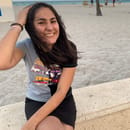Without the large gatherings of breast cancer survivor speakers, 5k runs and other Think Pink events, it may have slipped your mind that it was even Breast Cancer Awareness Month. As the month of October approaches its end, it is crucial to ensure that Breast Cancer Awareness has been acknowledged and commemorated fully.
Why Breast Cancer Awareness needs its own month
Breast Cancer is one of the leading cancers in women, second only to skin cancer. 12% of American women will develop breast cancer in her life. Out of this group, there is a 2.6% chance that she will die from breast cancer. However, on a more positive note, there are more than three million breast cancer survivors in the United States. The number of survivors is so high because of greater awareness, regular screenings and early detections. Having a society that is aware of the risks and symptoms of breast cancer saves millions of lives and prevents many invasive surgeries and treatments.
Surprisingly, breast cancer does not only affect women. There were 2,620 new cases of invasive breast cancer in American men in this year alone. Breast cancer is something that can affect anyone, and there is a very high chance someone in your life may be affected by it.
Local Breast Cancer Awareness events
Despite necessary COVID-19 protocols, UF still managed to find creative ways to celebrate Breast Cancer Awareness Month. The UF women’s soccer team traded their Gator colors of orange and blue for pink jerseys during their 12th annual Kicking for the Cure game.
AUXO fitness, a local Gainesville fitness studio, collaborated with Blossoming Butterfly, a non-profit organization aimed at providing funds for treatment for cancer patients. Their Paint the Park Pink event consisted of three donation-based outdoor fitness classes. All the proceeds were donated to Blossoming Butterfly.
Staying Informed: How to perform a self-exam
- Examine your breasts in the mirror and determine if they appear their usual size, shape or color. Check for any abnormal swelling or distortion.
-
Lift your arm and repeat the process from step one.
-
While looking in the mirror, be aware of any fluid coming out of your nipples.
-
Lie down and feel your breasts. Use your left hand to examine your right breast and your right hand to examine your left breast. Take the first few finger pads of your hand and begin examining your breast at your nipple. Continue examining in a circular motion, moving outwards, creating larger circles until you have examined your entire breast.
-
Repeat step four while sitting or standing.
It is so important to make breast self-exam part of your routine as a preventative measure. If you feel a lump, contact a doctor. Do not panic. There are a number of alternative reasons for a lump.
What you can do
Make sure to do your part. Give yourself breast examinations, get monograms regularly once you hit the designated age and use your voice to ensure your friends are getting checked as well.
Donate to breast cancer research and treatment funds. Provide support to people diagnosed with breast cancer and those with family members with breast cancer. As trivial as it may seem, get a breast cancer pin or sticker and wear it with pride: spread awareness!
Together we can minimize the threat of breast cancer!


